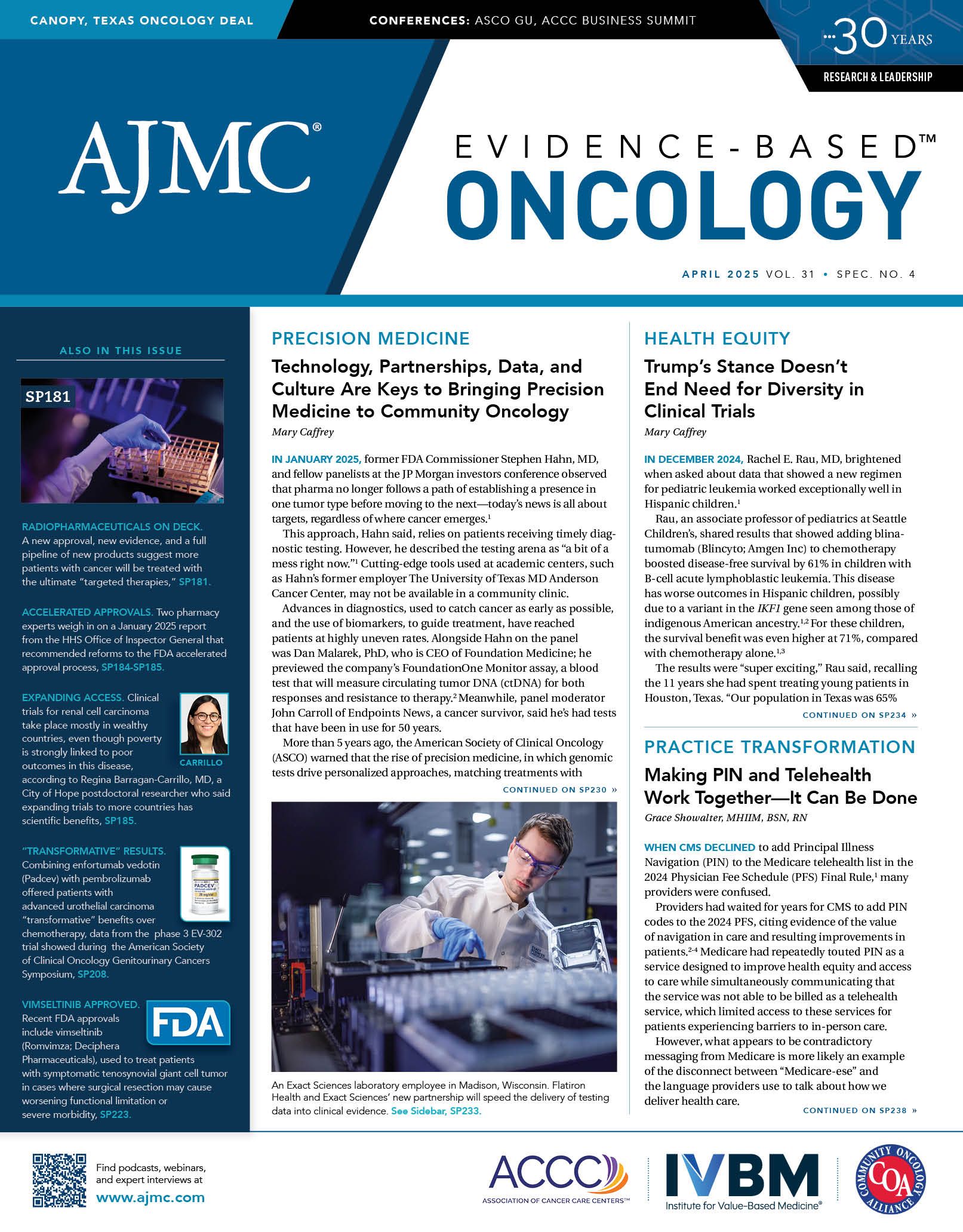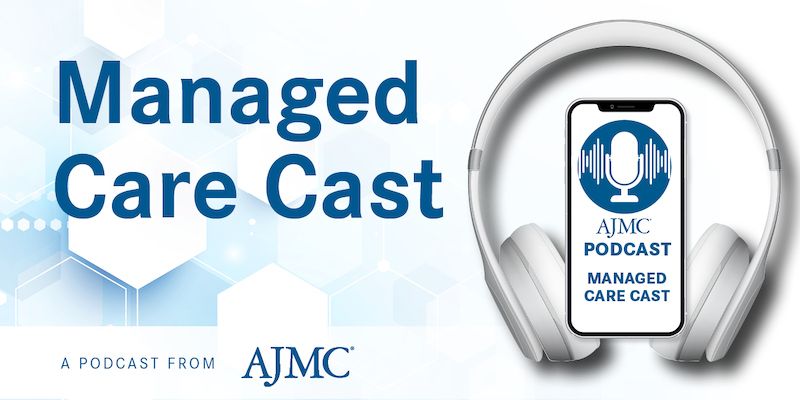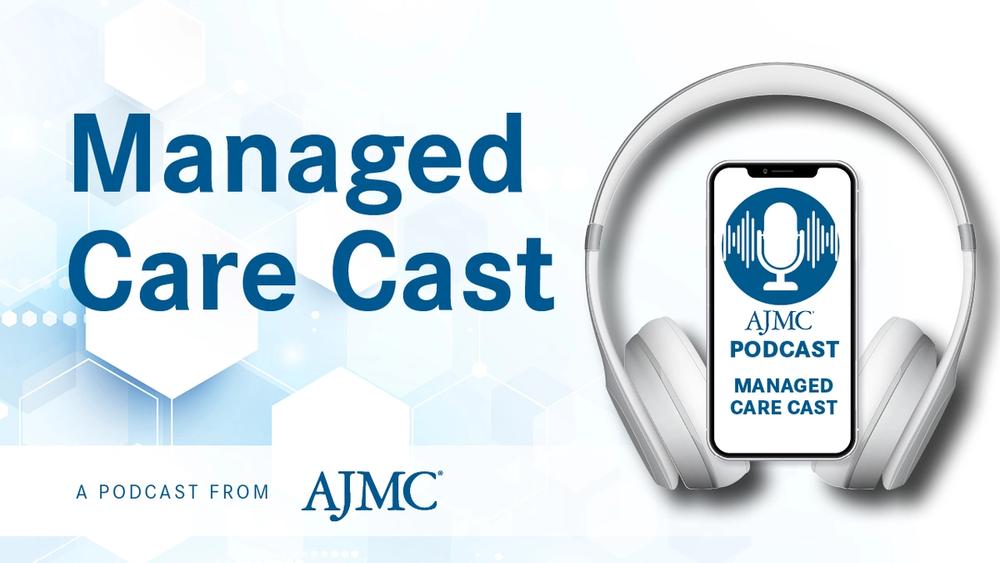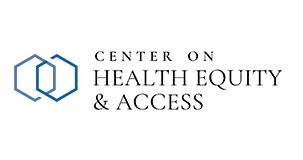Publication
Article
Evidence-Based Oncology
Evolent’s Wonsettler Sees Outcomes-Based Reimbursement as “A Healthy Tool”
Key Takeaways
- The FDA's accelerated approval of aducanumab led to controversy and a congressional investigation, highlighting issues in the approval process.
- The HHS OIG report found deviations in 3 out of 24 drug approvals, recommending improved documentation and specific advisement factors.
Terra Wonsettler, PharmD, MBA, vice president of pharmacy for Evolent, discusses the recent HHS OIG report that stemmed from the 2021 FDA approval of aducanumab (Aduhelm) and use of the accelerated approval pathway.
Are there lessons to be gained from FDA’s 2021 accelerated approval of aducanumab (Aduhelm), the monoclonal antibody some thought would offer hope for patients with Alzheimer disease? The controversial decision set off a wave of press coverage and an investigation by Congress. Ultimately, Biogen pulled the drug from the market after Medicare offered limited coverage.
Last month, the HHS Office of Inspector General (OIG) issued its report on the matter.1 It found deviations from recommended practices in 3 approvals out of 24 drugs it reviewed and offered 2 recommendations:
- FDA agreed that it should “take steps to ensure that appropriate documentation of meetings with sponsors is included in drug approval administrative files.”
- FDA should “define specific factors that would require FDA’s accelerated approval council to advise on certain drug applications.” FDA did not agree with this recommendation.1
The aducanumab approval is something of an outlier case; the more typical issues surrounding accelerated approvals involve drugs where confirmatory trials fail to produce evidence that matches a drug’s early promise. In recent years, some sponsors have withdrawn drugs from the market following disappointing results in confirmatory trials, which experts say should be expected as use of the pathway matures.
Terra Wonsettler, PharmD, MBA | Image credit: Evolent

For additional insight on the recent HHS OIG report, The American Journal of Managed Care® (AJMC) spoke with Terra Wonsettler, PharmD, MBA, vice president for pharmacy, Evolent. Last year, Wonsettler wrote a commentary for AJMC’s publication, Evidence-Based Oncology™, “Cancer drugs speed to accelerated approvals, then hit the brakes in timely, clinically beneficial confirmatory trials.”2
AJMC: The HHS OIG overview was sought in response to the Aduhelm episode. Although the report spends considerable time on that case, it also addresses more routine issues that come up with use of the accelerated approval pathway. What observations in the report did you think were fair? Did you think any observations in the report were unfair?
Wonsettler: That's a great question. Thinking back to those 3 observations and just bringing those back to the top, OIG really highlighted the deviation from recommended practices. In those instances, the FDA evaluated those analyses [were] not included in the sponsor's original plans, which deviated from best practices.
There were concerns from reviewers as well as the advisory committees in 3 of those 24 drugs in the sample size. Despite those concerns, those drugs pushed through to approval.
The third observation was incomplete documentation, so some of those meetings with the sponsors were either missing or incomplete from the administrative file. The FDA is required to document a basis for decisions, including those relevant meeting minutes. So certainly, they are fair observations, as they're ultimately underscoring the need for more stringent documentation and adherence to the accelerated approval pathway, which already grants—as quoted in the report—tremendous latitude in decision making.
AJMC: As you explained in your commentary, the accelerated approval pathway seeks to strike a balance between bringing life-saving therapies to patients as quickly as possible and generating evidence to support ongoing approval. Do the recommendations suggested by the HHS OIG support this balance?
Wonsettler: So, those 2 recommendations were ultimately made to strengthen those guardrails, ensuring appropriate and consistent use of the accelerated approval pathway. For a process-oriented retrospective review of that smaller sample size of 24 medications, these steps do support a path to a more documented, escalated review process to ultimately support the defense of a decision. They’re looking for complete, comprehensive documentation to help maintain that transparency, which is especially critical, as well as the accountability and the evidence, as well as the council to advise in those drug applications [when there is] a lack of uniform consensus, concern or review of analysis outside of that prespecified plan.
AJMC: One recommendation called for doing more to ensure that all meetings between sponsors and FDA are properly documented. What are your thoughts on this recommendation in light of the report’s findings about the [aducanumab] approval?
Wonsettler: Proper documentation with clear records and decisions provides transparency and also gives a trail of supporting decisions. They improve that accountability and facilitate that oversight and identify those deviations from those standard processes. So, while the FDA did concur that it is important to ensure appropriate documentation, and they're updating their internal procedures, there remains that greater opportunity for transparency proactively, especially for the patients taking these therapies.
In the report, the OIG did note a risk-to-benefit profile allowing drug sponsors to use the surrogate end points in the accelerated approval process where the risk of the drug may not ultimately provide a benefit that's predicted. These are the resources called for in “Cancer Drugs Speed to Accelerated Approvals Then Hit the Brakes in Timely, Clinically Beneficial Confirmatory Trials.”2 Resources such as educational materials and guidance on the accelerated pathway highlight the risks and benefits, which enhance these patient conversations. It’s critical to get this information to our patients as well.
AJMC: FDA did not support the other recommendation regarding guardrails to trigger meetings of the accelerated approval council. What are your thoughts on this recommendation?
Wonsettler: Yes, of course; while the need for these resources does require consideration, this is a call-to-action opportunity for a cost-to-benefit analysis, weighing the clinical resources required versus the tragic time lost, the outcomes and the financial toxicity incurred in non-efficacious treatment to patients.
AJMC: Do payers have a fair argument that some compensation is warranted if a therapy fails to live up to expectations?
Wonsettler: Absolutely. As we pan out and look at the United States across other countries on the globe, we in the US far outpace other nations and expect to exceed 20% of our GDP on health care spending over just the next 10 years. Meanwhile, the US also lags on health outcomes. So, with that setting and that foundation, patients also deserve high-value care. Outcomes-based reimbursement can be a healthy tool, aligning the entire health continuum from the start of the drug manufacturer, ultimately to the patient.
References
- Office of the HHS Inspector General. How FDA used its accelerated approval pathway raised concerns in 3 of 24 drugs reviewed OEI-01-21-00400. HHS. Published January 2025. Accessed January 14, 2025. https://oig.hhs.gov/documents/evaluation/10160/OEI-01-21-00400.pdf
- Wonsettler T. Cancer drugs speed to accelerated approvals, then hit the brakes in timely, clinically beneficial confirmatory trials. Am J Manag Care. 2024;30(SP9):SP722-SP724. doi:10.37765/ajmc.2024.89597.


Navigating Sport-Related Neurospine Injuries, Surgery, and Managed Care




